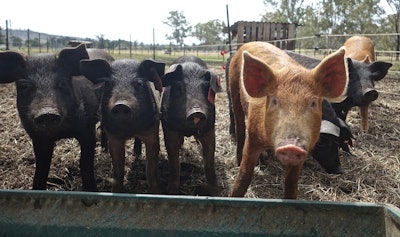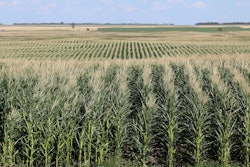
China Soy Imports Higher
- For the month of September, China imported 9.8 million tonnes of soybeans from all origins, up 19% from last year.
- Imports from the US were 1.17 million tonnes, down 32.4% from 1.73 million tonnes last September.
- China imported 7.25 million tonnes of soybeans from Brazil, up 51.4% from 4.79 million last year.
- China's national soybean stocks decreased to 7 million tonnes as of October 18 after reaching nearly 8 million tonnes in September.
- Soy meal inventories were 937,900 tonnes, down from a record high of 1.27 million tonnes reached at the beginning of September.
FBN’s Take On What It Means: Due to favorable margins and thanks to recovering feed demand, Chinese bean crushers purchased a large amount of beans from Brazil earlier in the year. China’s feed demand continues to be elevated on further expansion of livestock numbers. Producers in Brazil were willing sellers as prices in the Brazilian currency were high. As Brazilian supplies dwindled, China turned to the US for its import needs. Shipments from the US are expected to rise in the fourth quarter. We expect US basis levels will likely remain firm as commercials need to source supplies for shipment.
Argentina Crop Conditions
- The Buenos Aires Grain Exchange lowered its projection of Argentina’s wheat crop to 16.8 million tonnes from 17.5 million previously.
- The USDA’s most recent forecast was for production of 19 million tonnes.
- Wheat crop ratings last week were 10% good to excellent and 40% fair, each up 1% from the week before.
- Harvest for wheat was reported at 3% complete compared to 2% last year and 2% average.
- Corn planting progress was 28% complete vs 23% last week, and remains behind the average pace of 34%.
- The exchange did not report bean planting has begun, needing fields to dry out after heavy rains last week.
- Last year, Argentine planting wasn’t reported until November 7 and was 8.7% complete.
FBN’s Take On What It Means: Recent rain was too late to help the wheat crop in Argentina’s north and west where poor conditions continue. However, that rain helped the crop in the south, and overall conditions showed a slight improvement. The greatest planting advances occurred in the Central regions of Argentina before the rains started and the improved soil moisture reserves will help the later stage planting.
FBN Market Advisory services are offered by FBN BR LLC, dba FBN Brokerage, FBN BR and FBN Market Advisory (NFA ID: 0508695)
The risk of trading futures and options can be substantial and may not be suitable for all investors. Past performance is not necessarily indicative of future results.
This is not an offer or solicitation in any jurisdiction where we are not authorized to do business or where such offer or solicitation would be contrary to the local laws and regulations of that jurisdiction, including, but not limited to, persons residing in Australia and Canada.










